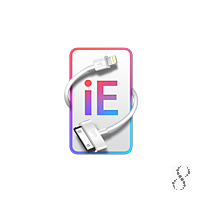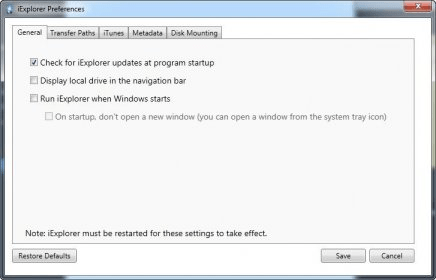IEC 61000-4-2 is the International Electrotechnical Commission's immunity standard on Electrostatic Discharge (ESD). The publication is one of the basic EMC standards of the IEC 61000–4 series. The European equivalent of the standard is called EN 61000-4-2. The current version of the IEC standard is the second edition dated 2008-12-09.[1] The basic standards (61000-4) are usually called by product or family specific standards, which use these basic standards as a common reference.
IExplorer 4.2.2 Free Download Latest Version for Windows. It is full offline installer standalone setup of iExplorer 4.2.2 for 32/64. IExplorer 4.2.2 Overview. IExplorer 4.2.2 is an impressive iPhone or iPad browser that will let you copy, transfer and backup the files and folders to/from your device by using simple drag and drop operation. The first octet of the Warning Message Contents IE is equivalent to the first octet of the CB data IE defined in and encoded according to TS 23.041 - 9.4.2.2.5 and so on.
Scope[edit]
The publication describes requirements, levels and test methods to achieve immunity compliance of an electronic product. The purpose is to create a reproducible ground for product compliance and the standard defines: ranges, levels, test equipment, setups, procedures, calibrations, generator waveforms and general uncertainties. The intention is not to define product specific tests but instead establish a basic common reference. Product specific tests are instead defined in standards such as EN 50130-4 for alarm systems, EN 50121-4-2 for railway applications or IEC 60601-1-2 for medical equipment.
The product, or equipment under test (EUT), is seen from an operators point of view during test. The EUT is therefore in its operational mode and testing does not include storage or transportation conditions.
Test levels[edit]
Iexplorer 4.2.2 Registration Code
The EUT is subjected to three types of discharge. Direct contact discharge is preferred either directly to the EUT or indirectly through vertical or horizontal coupling planes. Air discharge is used where direct contact cannot be applied.
Iexplorer 4.2.6
| ESD Test Levels (IEC/EN 61000-4-2)[2] | |||||||||
|---|---|---|---|---|---|---|---|---|---|
| Contact discharge | Air discharge | ||||||||
| Level | Test voltage | Test voltage | |||||||
| 1 | ±2 kV | ±2 kV | |||||||
| 2 | ±4 kV | ±4 kV | |||||||
| 3 | ±6 kV | ±8 kV | |||||||
| 4 | ±8 kV | ±15 kV | |||||||
| x | x | x | |||||||
| x can be any level specified in product specific standards | |||||||||
Note: This table is simplified for the purpose of giving a quick overview. It does not contain the same level of detail as the official IEC 61000-4-2.
ESD transient[edit]
The standard describes the output RC-network of the generator as having typical values of 330 Ω and 150 pF. The specified transient risetime (from 10% to 90% of the first peak) is 0.8 ns (±25%). The transient duration is not specified but for waveform verification currents should be measured in 30 ns and 60 ns for each of the test levels.[2]
See also[edit]
Notes and references[edit]
- ^https://webstore.iec.ch/publication/4189
- ^ abIEC 61000-4-2 (2.0 ed.). International Electrotechnical Commission (IEC). December 2008. pp. 7, 10–13. ISBN978-2-88910-372-0.
External links[edit]
- 'IEC 61000-4-2' at International Electrotechnical Commission

CMAS
CMAS stands for Commercial Mobile Alert System. It is equivalent to CBS(Cell Broadcasting Service) in 2G and 3G. At high level view, CMAS, ETWS, CBS belongs to a system called PWS (Public Warning System).
In LTE, there are three main components getting involved in sending CMAS as follows.
i) Paging : CMAS Notification.
ii) SIB 12 : Message Format and Contents
Following is Paging, SIB12 showing the field (IEs) related to CMAS. (For the details of ETWS, refer to 3GPP TS23.828 and TS22.268 and TS 36.523 18.1 CMAS on LTE)
PCCH-Message ::= SEQUENCE
+-message ::= CHOICE [c1]
+-c1 ::= CHOICE [paging]
+-paging ::= SEQUENCE [0001]
+-pagingRecordList ::= SEQUENCE OF OPTIONAL:Omit
+-systemInfoModification ::= ENUMERATED OPTIONAL:Omit
+-etws-Indication ::= ENUMERATED OPTIONAL:Omit
+-nonCriticalExtension ::= SEQUENCE [01] OPTIONAL:Exist
+-lateNonCriticalExtension ::= OCTET STRING OPTIONAL:Omit
+-nonCriticalExtension ::= SEQUENCE [10] OPTIONAL:Exist
+-cmas-Indication-r9 ::= ENUMERATED [true] OPTIONAL:Exist
+-nonCriticalExtension ::= SEQUENCE OPTIONAL:Omit
BCCH-DL-SCH-Message ::= SEQUENCE
+-message ::= CHOICE [c1]
+-c1 ::= CHOICE [systemInformation]
+-systemInformation ::= SEQUENCE
+-criticalExtensions ::= CHOICE [systemInformation-r8]
+-systemInformation-r8 ::= SEQUENCE [0]
+-sib-TypeAndInfo ::= SEQUENCE OF SIZE(1..maxSIB[32]) [1]
| +- ::= CHOICE [sib12-v920]
| +-sib12-v920 ::= SEQUENCE [10]
| +-messageIdentifier-r9 ::= BIT STRING SIZE(16) [0001000100010010]
| +-serialNumber-r9 ::= BIT STRING SIZE(16) [0011000000000000]
| +-warningMessageSegmentType-r9 ::= ENUMERATED [lastSegment]
| +-warningMessageSegmentNumber-r9 ::= INTEGER (0..63) [0]
| +-warningMessageSegment-r9 ::= OCTET STRING SIZE(ALIGNED)

[01C576597E2EBBC7F950A8D168341A8D46A3D168341
A8D46A3D168341A8D46A3D168341A8D46A3D168341A
8D46A3D168341A8D46A3D168341A8D46A3D168341A8
D46A3D168341A8D46A3D168341A8D46A3D1000A]
| +-dataCodingScheme-r9 ::= OCTET STRING SIZE(1) [01] OPTIONAL:Exist
Iexplorer 4.2 Registration Code 2018
| +-lateNonCriticalExtension ::= OCTET STRING OPTIONAL:Omit
| +-EXTENSION ::= SEQUENCE
+-nonCriticalExtension ::= SEQUENCE OPTIONAL:Omit
Followings are the description related to warningMessageSegment. (For messageIdentifier, serialNumber, dataCodingScheme, click on the link for the details)
According to 36.331, warningMessageSegmentType, warningMessageSegmentNumber,warningMessageSegment are defined as follows.
warningMessageSegment : Carries a segment of the Warning Message Contents IE defined in TS 36.413-9.2.1.53. The first octet of the Warning Message Contents IE is equivalent to the first octet of the CB data IE defined in and encoded according to TS 23.041 - 9.4.2.2.5 and so on.
< 36.413-9.2.1.53 Warning Message Contents >
IE/Group Name | Prsence | Range | IE Type and Reference | Semantics Description |
Warning Message Contents | M | OCTET STRING (SIZE(1..9600)) | The length of this IE varies between 1 to 9600 bytes. |
< 23.041-9.4.2.2.5 CB Data >
warningMessageSegmentNumber : Segment number of the ETWS warning message segment contained in the SIB. A segment number of zero corresponds to the first segment, one corresponds to the second segment, and so on.
warningMessageSegmentType : Indicates whether the included ETWS warning message segment is the last segment or not.

CMAS Message Sequence Example
Step | Direction | Message | Comments |
1 | UE <-- NW | Indicate SIB12 is scheduled | |
2 | UE <-- NW | Transmit CMAS message | |
3 | UE <-- NW | CMAS indication is present | |
4 | UE | Detect the Paging with CMAS Indication | |
5 | UE | Decode SIB1 and find SIB12 is scheduled | |
6 | UE | Decode SIB12 |
According to 36.331-5.3.2.3, the procedure to receiving CMAS is described as follows.
When UE recieved the Paging message,
- Check if the cmas-Indication is included and the UE is CMAS capable:
- if true, re-acquire SystemInformationBlockType1 immediately, i.e., without waiting until the next system information modification period boundary;
- Check if the schedulingInfoList in SIB1 indicates that SystemInformationBlockType12 is present:
- if true, acquire SystemInformationBlockType12;
Step 1 : SIB 1
BCCH-DL-SCH-Message
message: c1 (0)
c1: systemInformationBlockType1 (1)
systemInformationBlockType1
cellAccessRelatedInfo
plmn-IdentityList: 1 item
Item 0
PLMN-IdentityInfo
plmn-Identity
mcc: 3 items
Item 0
MCC-MNC-Digit: 0
Item 1
MCC-MNC-Digit: 0
Item 2
MCC-MNC-Digit: 1
mnc: 2 items
Item 0
MCC-MNC-Digit: 0
Item 1
MCC-MNC-Digit: 1
cellReservedForOperatorUse: notReserved (1)
trackingAreaCode: 0000 [bit length 16, 0000 0000 0000 0000 decimal value 0]
cellIdentity: 00000000
cellBarred: notBarred (1)
intraFreqReselection: notAllowed (1)
.... ..0. csg-Indication: False
cellSelectionInfo
q-RxLevMin: -110dBm (-55)
p-Max: 23dBm
freqBandIndicator: 4
schedulingInfoList: 3 items
Item 0
SchedulingInfo
si-Periodicity: rf16 (1)
sib-MappingInfo: 0 items
Item 1
SchedulingInfo
si-Periodicity: rf32 (2)
sib-MappingInfo: 1 item
Item 0
SIB-Type: sibType3 (0)
Item 2
SchedulingInfo
si-Periodicity: rf32 (2)
sib-MappingInfo: 1 item
Item 0
SIB-Type: sibType12-v920 (9)
si-WindowLength: ms20 (5)
systemInfoValueTag: 0
nonCriticalExtension
nonCriticalExtension
ims-EmergencySupport-r9: true (0)
BCCH-DL-SCH-Message
message: c1 (0)
c1: systemInformation (0)
systemInformation
criticalExtensions: systemInformation-r8 (0)
systemInformation-r8
sib-TypeAndInfo: 1 item
Item 0
sib-TypeAndInfo item: sib12-v920 (10)
sib12-v920
messageIdentifier-r9: CMAS Identifier for CMAS Presidential Level Alerts (4370)
serialNumber-r9: 3000 [bit length 16, 0011 0000 0000 0000 decimal value 12288]
00.. .... .... .... = Geographical Scope: Display mode immediate, cell wide (0)
..11 0000 0000 .... = Message Code: 768
.... .... .... 0000 = Update Number: 0
warningMessageSegmentType-r9: lastSegment (1)
warningMessageSegmentNumber-r9: 0
warningMessageSegment-r9: 0154747a0e4acf416137a8d82ecbcf65f7388...
dataCodingScheme-r9: 01
0000 .... = Coding Group: Coding Group 0
(Language using the GSM 7 bit default alphabet) (0)
.... 0001 = Language: English (1)
Step 3 : Paging
PCCH-Message
message: c1 (0)
c1: paging (0)
paging
nonCriticalExtension
nonCriticalExtension
cmas-Indication-r9: true (0)
[Expert Info (Warn/Sequence): Commercial Mobile Alert System Indication!]
[Commercial Mobile Alert System Indication!]
[Severity level: Warn]
[Group: Sequence]
NOTE : This paing would not carry specific UE ID since this Paging is broadcasting (i.e, for every UE in the cell)
Example 01 :
BCCH-DL-SCH-Message
message: c1 (0)
c1: systemInformation (0)

systemInformation
criticalExtensions: systemInformation-r8 (0)
systemInformation-r8
sib-TypeAndInfo: 1 item
Item 0
sib-TypeAndInfo item: sib12-v920 (10)
sib12-v920
messageIdentifier-r9:
CMAS Identifier for CMAS Presidential Level Alerts (4370)
serialNumber-r9: 3007
[bit length 16, 0011 0000 0000 0111 decimal value 12295]
00.. .... .... .... = Geographical Scope:
Display mode immediate, cell wide (0)
..11 0000 0000 .... = Message Code: 768
.... .... .... 0111 = Update Number: 7
warningMessageSegmentType-r9: lastSegment (1)
warningMessageSegmentNumber-r9: 0
warningMessageSegment-r9:
01c576597e2ebbc7f950a8d168341a8d46a3d168341a8d46...
[1 Fragment (84 bytes): #1(84)]
[Frame: 1, payload: 0-83 (84 bytes)]

[Fragment Count: 1]
[Reassembled Length: 84]
[Reassembled Data:
01c576597e2ebbc7f950a8d168341a8d46a3d168341a8d46...]
dataCodingScheme-r9: 01
0000 .... = Coding Group:
Coding Group 0(Language using the GSM 7 bit default alphabet)(0)
.... 0001 = Language: English (1)
HEX (BCCH) :
00 40 2E 21 11 23 00 78 0A 80 38 AE CB 2F C5 D7 78 FF 2A 15 1A 2D 06 83 51 A8 D4 7A 2D 06 83 51 A8
D4 7A 2D 06 83 51 A8 D4 7A 2D 06 83 51 A8 D4 7A 2D 06 83 51 A8 D4 7A 2D 06 83 51 A8 D4 7A 2D 06 83
51 A8 D4 7A 2D 06 83 51 A8 D4 7A 2D 06 83 51 A8 D4 7A 2D 06 83 51 A8 D4 7A 20 01 40 20 00
HEX (warningMessageSegment-r9) :
01C5 76 59 7E 2E BB C7 F9 50 A8 D1 68 34 1A 8D 46 A3 D1 68 34 1A 8D 46 A3 D1 68 34 1A 8D 46 A3 D1
68 34 1A 8D 46 A3 D1 68 34 1A 8D 46 A3 D1 68 34 1A 8D 46 A3 D1 68 34 1A 8D 46 A3 D1 68 34 1A 8D 46
A3 D1 68 34 1A 8D 46 A3 D1 68 34 1A 8D 46 A3 D1 00 0A
=> According to 23.041-9.4.2.2.5 CB Data, the decoded result is as follows
01 : Number of Page = 1
0A : Message Information Length = 11
Contents of the Message : C5 76 59 7E 2E BB C7 F9 50 A8 > Emergency!!
The contents of CMAS(warningMessageSegment) is encoded in various different method as described in DCS page. Since there are too many different coding scheme, it would be hard to find a tool that can encode/decode every coding scheme. But if the message uses the two most common coding scheme called GSM 7bit and UCS, you can use the on-line tool called SMS Server Tools 3. As the name implies, this tool is not specifically designed for CMAS. It is designed for encoding / decoding SMS. But the coding scheme for SMS and CMAS is similar, you can use this tool to encode / decode CMAS message.
Here goes short tips on how to use this tool.
Iexplorer 4.2.8
Encoding : Text To HEX (GSM 7 bit)
(1) Select '7' at Alphabet Size
(2) type in the text you want to send as CMAS message
(3) press [Convert>] button
(4) the resulting AT command to send this message
(5) the resulting HEX string for the message
Decoding : HEX (GSM 7 bit) to Text
(1) Select '7' at Alphabet Size
(2) Select 'GSM 7bit packed'
(3) type in HEX string for the text you want to send as CMAS message
(4) press [Convert>] button
(5) the result text
Reference :
[1] Appendix: GSM 7-bit Default Alphabet Table (with Character Codes of ISO 8859 Latin 1)
[2] SMS Server Tools 3
